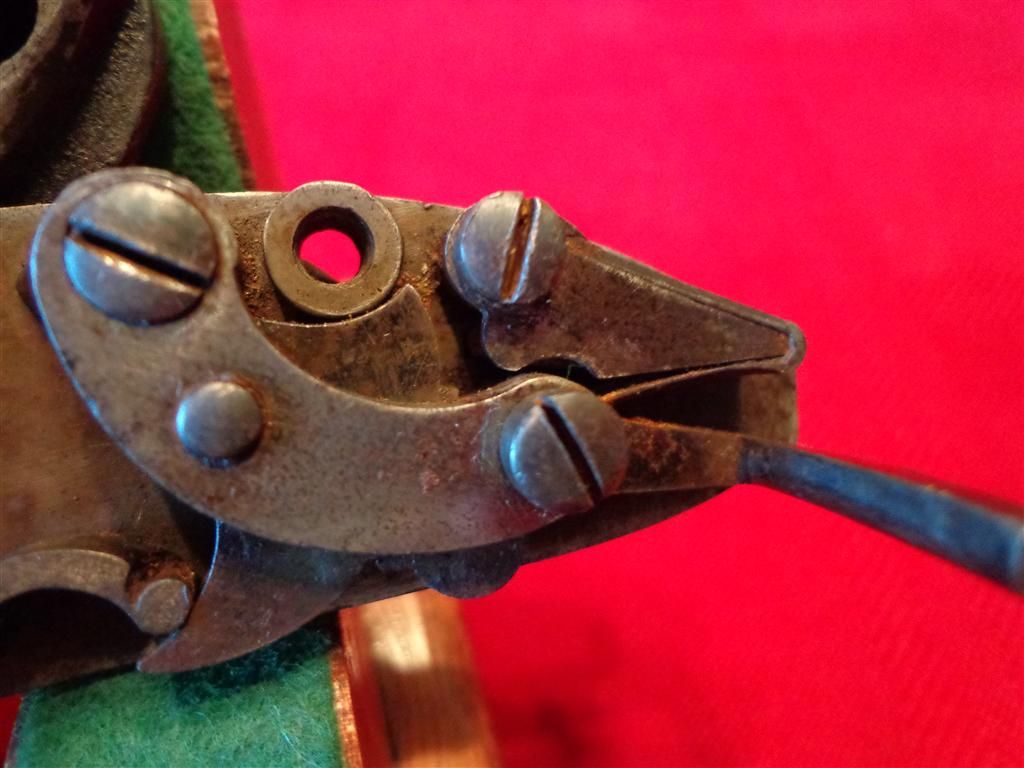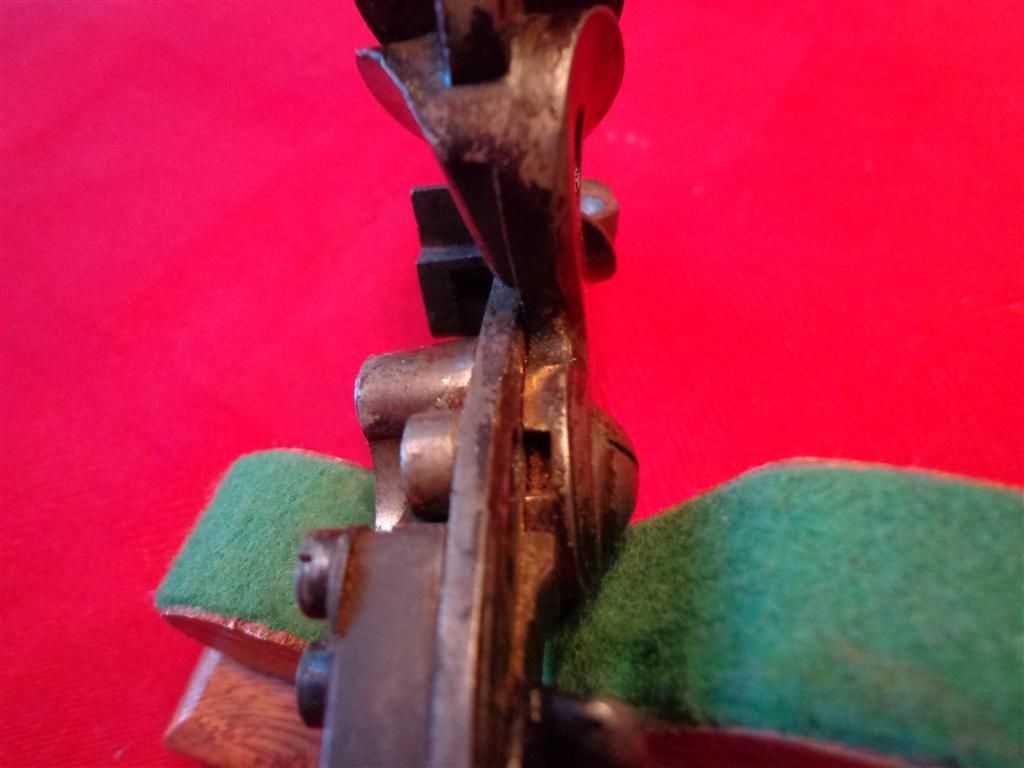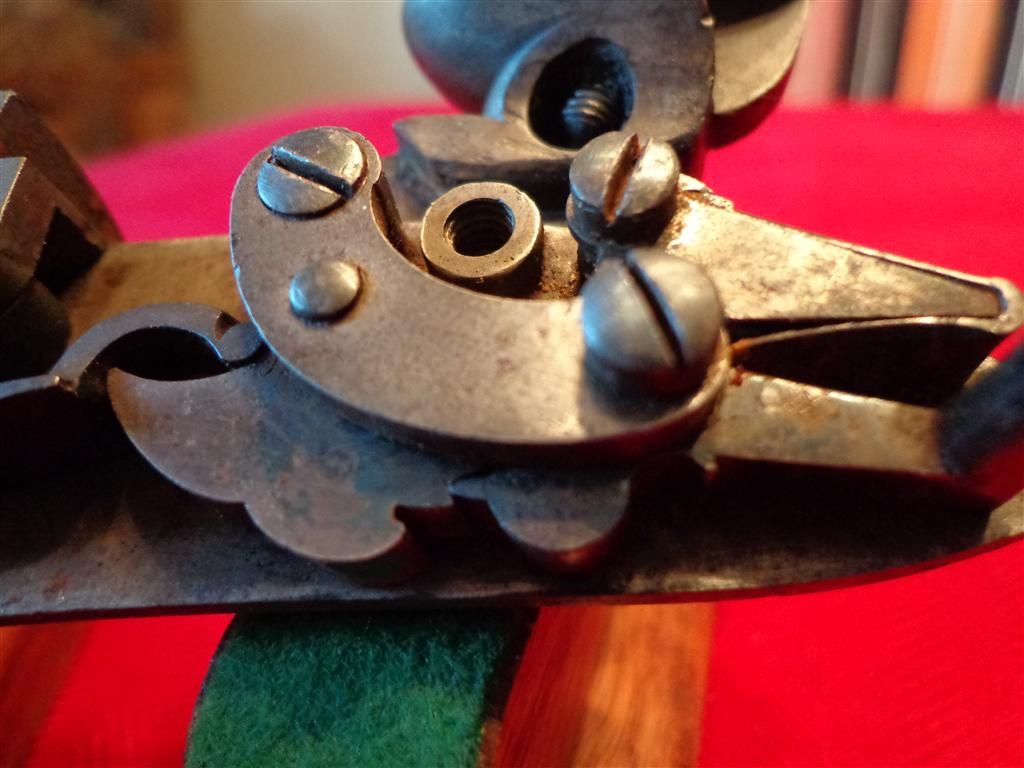- Joined
- May 24, 2005
- Messages
- 5,437
- Reaction score
- 5,200
Hello all. I picked this Lock Plate up while at the Antique Arms Show in Hartford earlier this month. Thought it would be a nice addition to my lock collection. Just needs to be dis-assembled and cleaned a bit more. It's in really nice shape and shows very little use.
A very late English flintlock dated 1835. Internal frizzen spring, and exterior slide safety. The outside of the plate has the WR and a Crown. There is a small crown, and what appears to be a broad arrow through it located between the hammer and pan fence. Inside, the only markings are a small crown with a 8 just below it, and a tiny 6 higher up on the plate.
If you look in TRS Catalog on page 51 there is a Pattern 1833 Manton Carbine (747) that has an identical lock. Even the measurements in the Catalog match this lock. Although this lock is a forging vs a casting. So it appears I have the real thing.
I was hoping maybe someone could provide me with some additional information on this lock beyond the information in TRS Catalog?
This lock must have been used just before the transition to percussion.
Anyway, here are some photos. Any additional information appreciated. Thanks. Rick. :hatsoff:
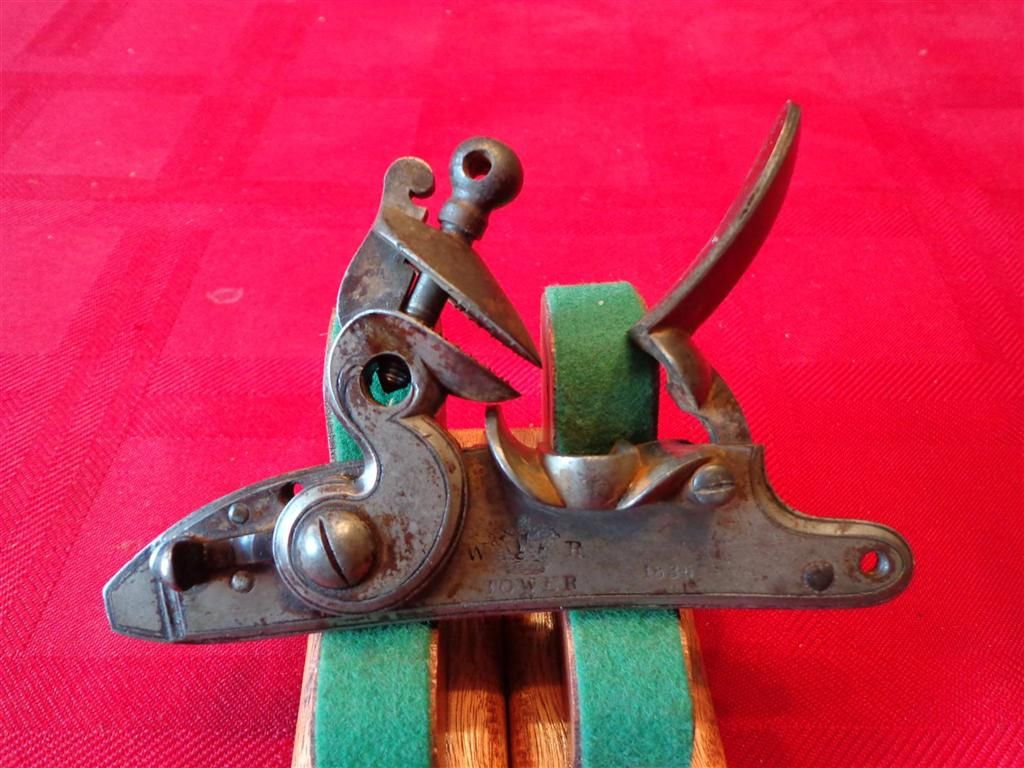
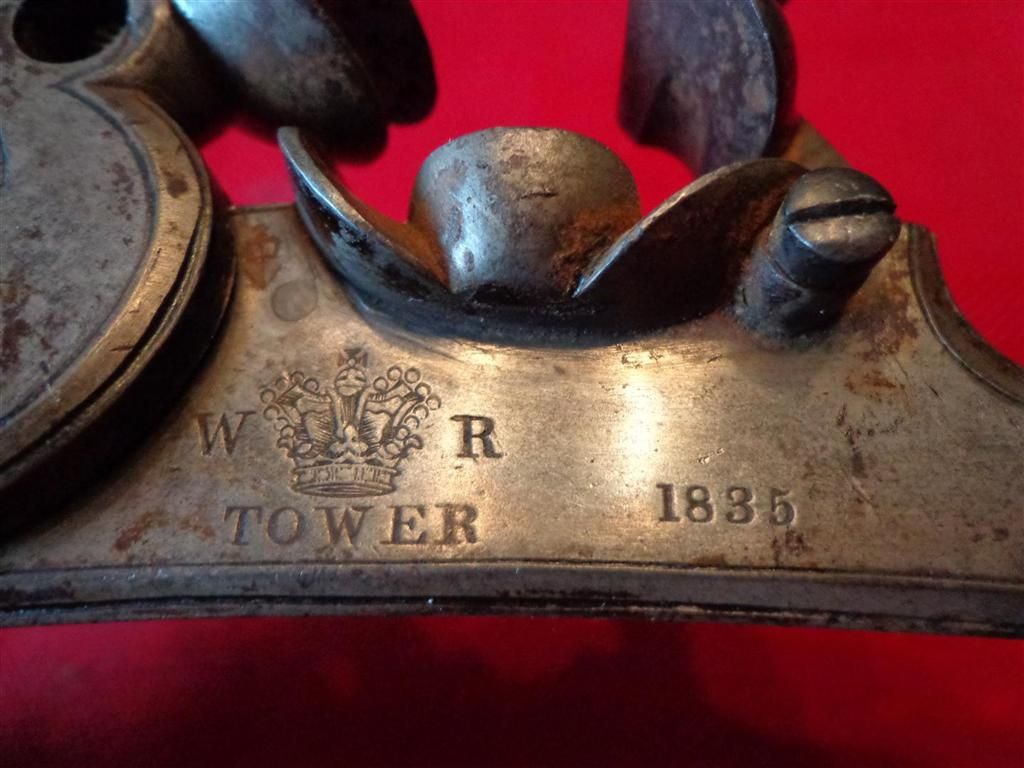
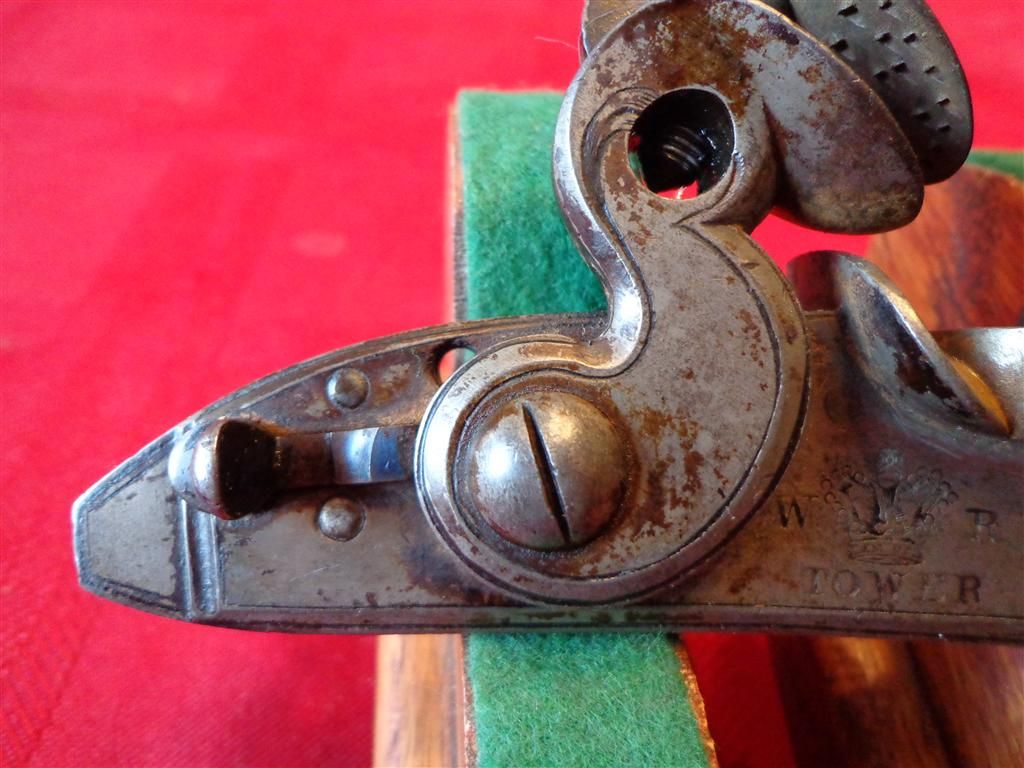
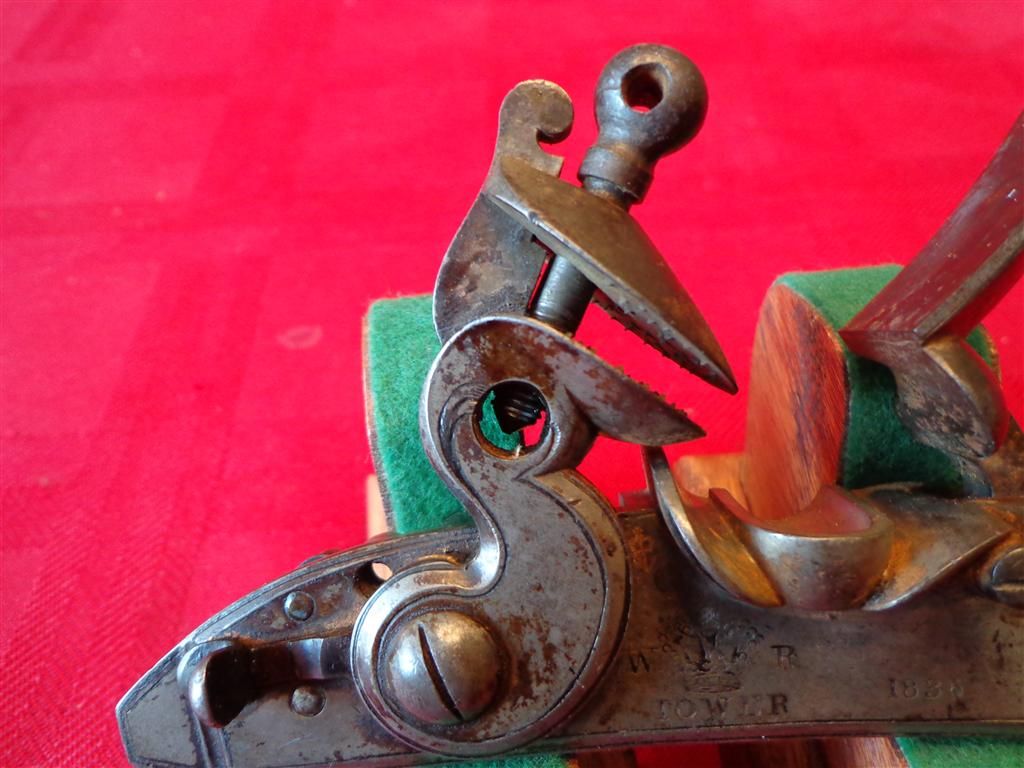
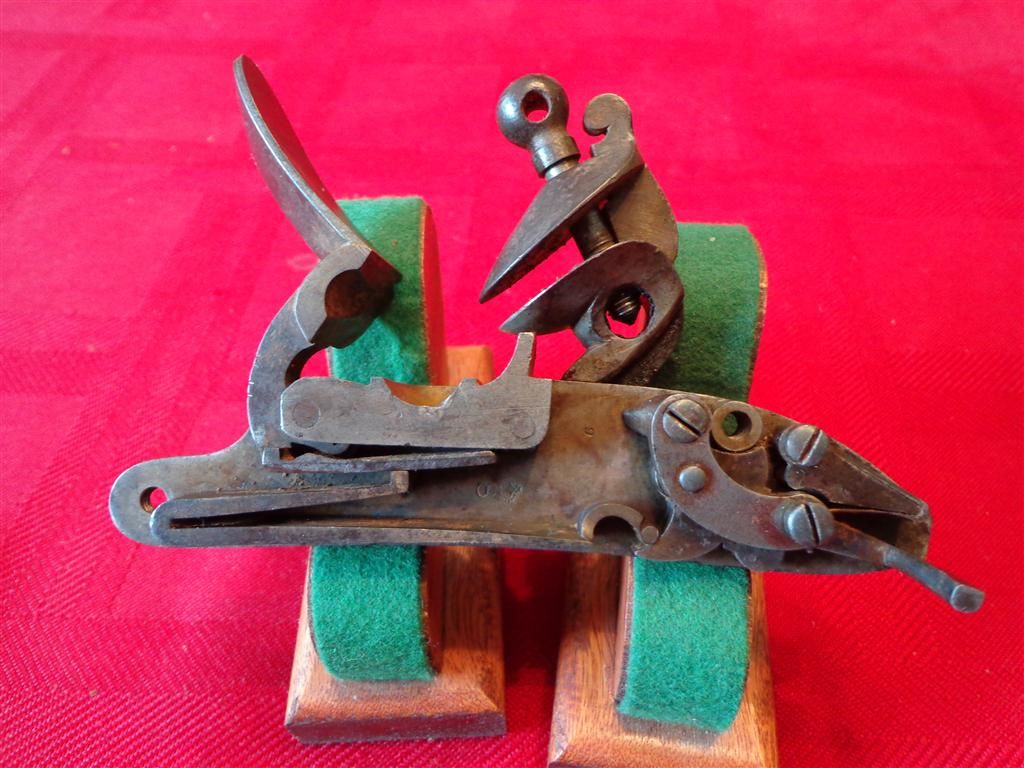
 [/IMG][/URL]
[/IMG][/URL]
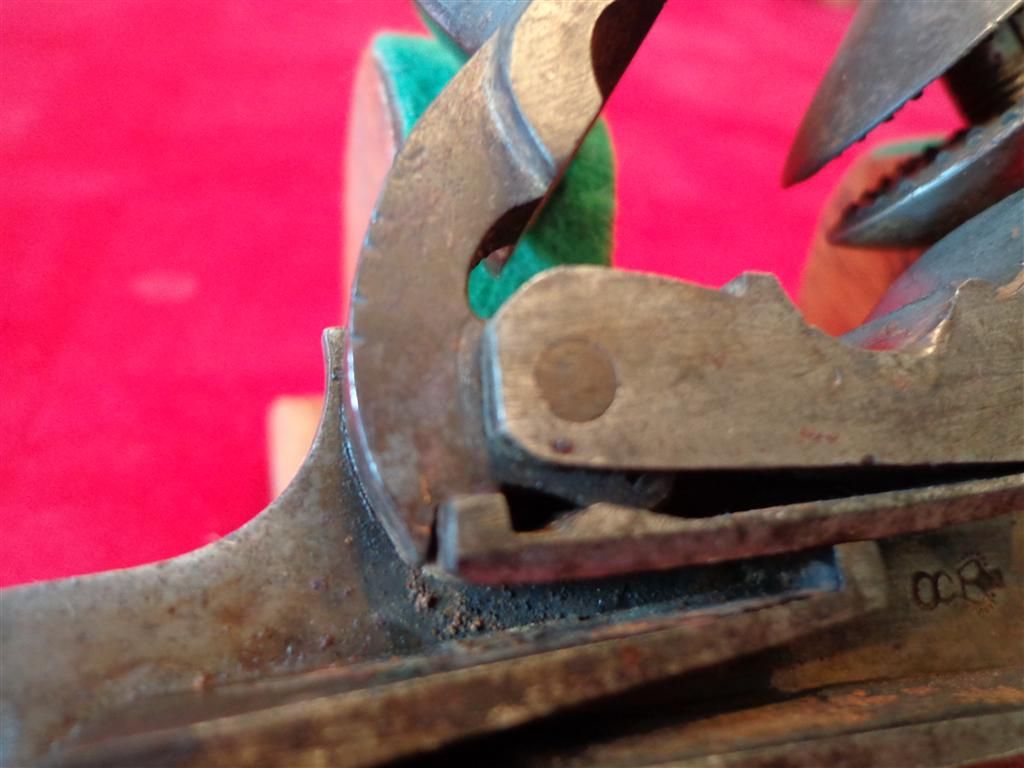
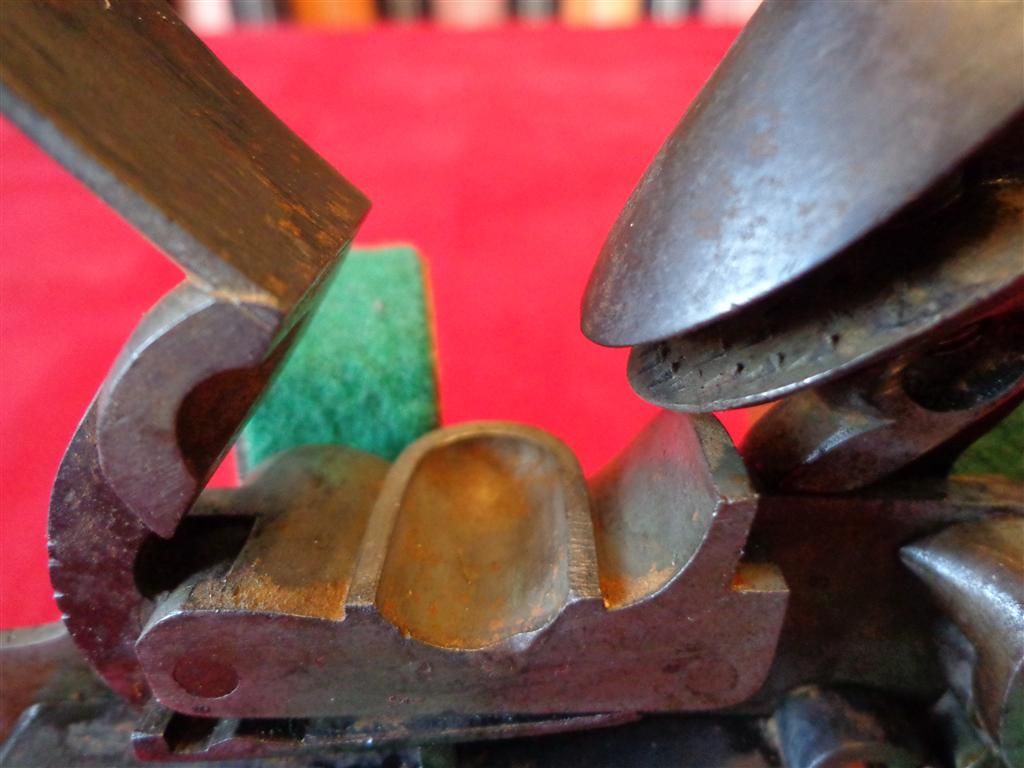
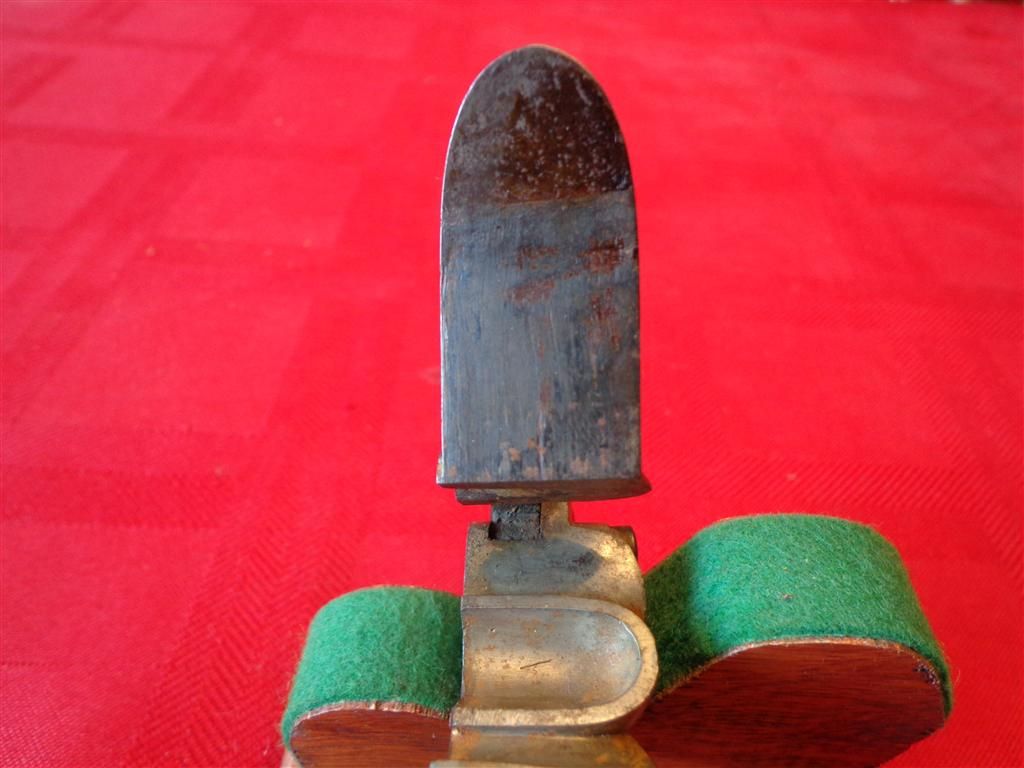
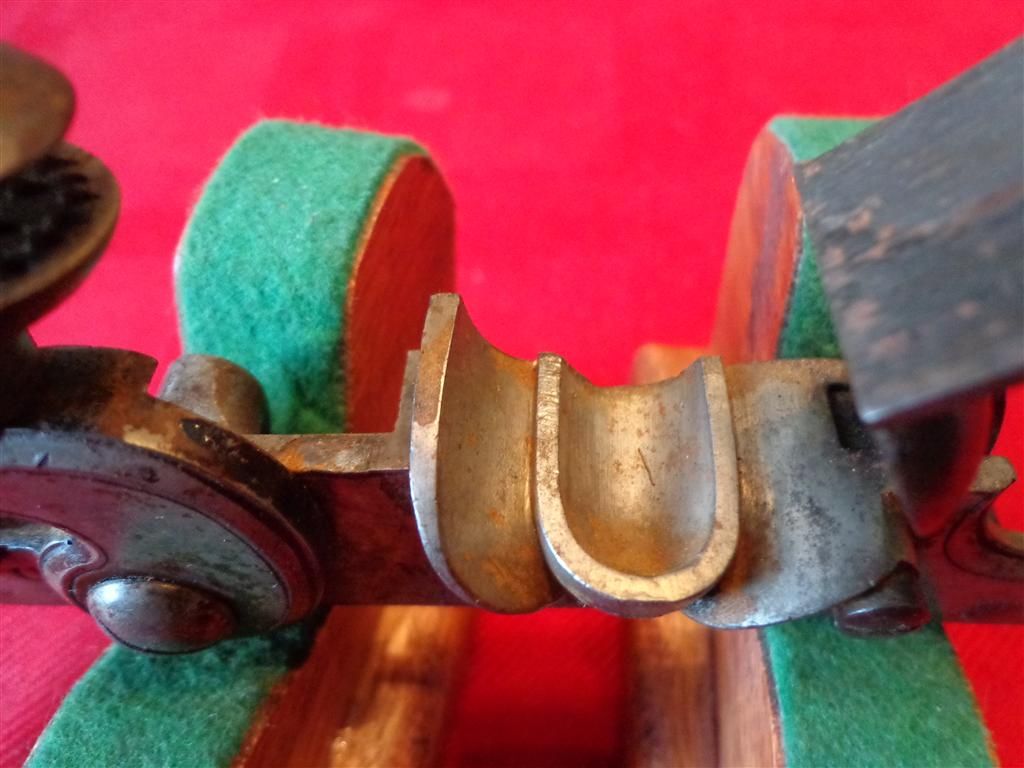
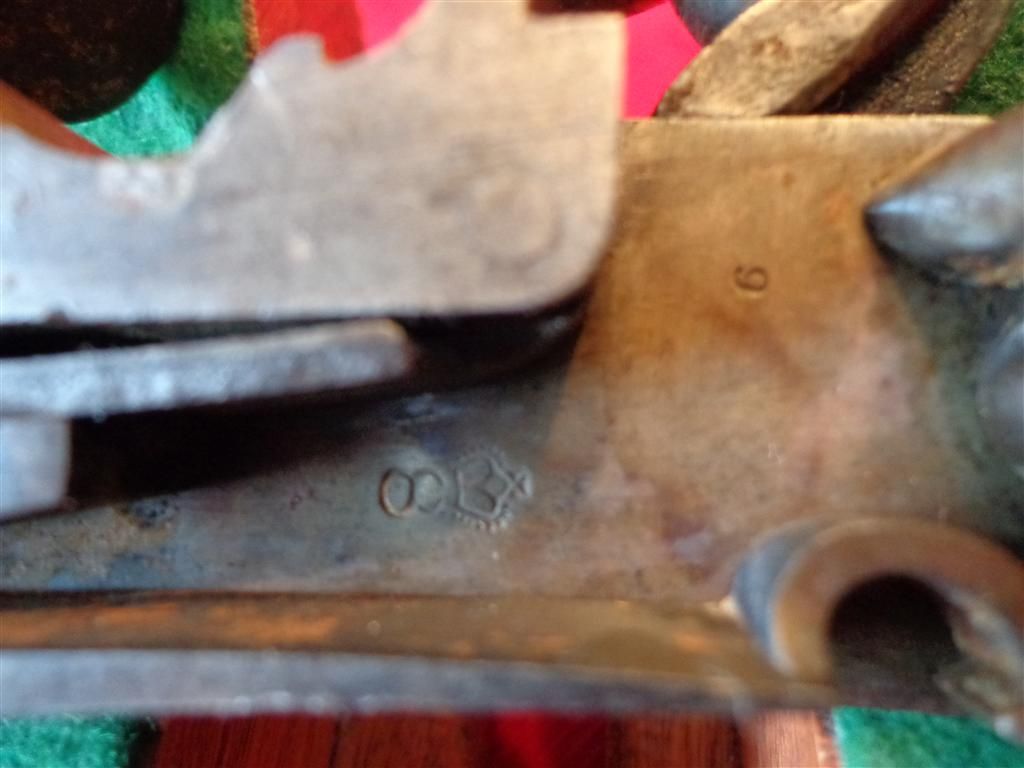
A very late English flintlock dated 1835. Internal frizzen spring, and exterior slide safety. The outside of the plate has the WR and a Crown. There is a small crown, and what appears to be a broad arrow through it located between the hammer and pan fence. Inside, the only markings are a small crown with a 8 just below it, and a tiny 6 higher up on the plate.
If you look in TRS Catalog on page 51 there is a Pattern 1833 Manton Carbine (747) that has an identical lock. Even the measurements in the Catalog match this lock. Although this lock is a forging vs a casting. So it appears I have the real thing.
I was hoping maybe someone could provide me with some additional information on this lock beyond the information in TRS Catalog?
This lock must have been used just before the transition to percussion.
Anyway, here are some photos. Any additional information appreciated. Thanks. Rick. :hatsoff:





 [/IMG][/URL]
[/IMG][/URL]








